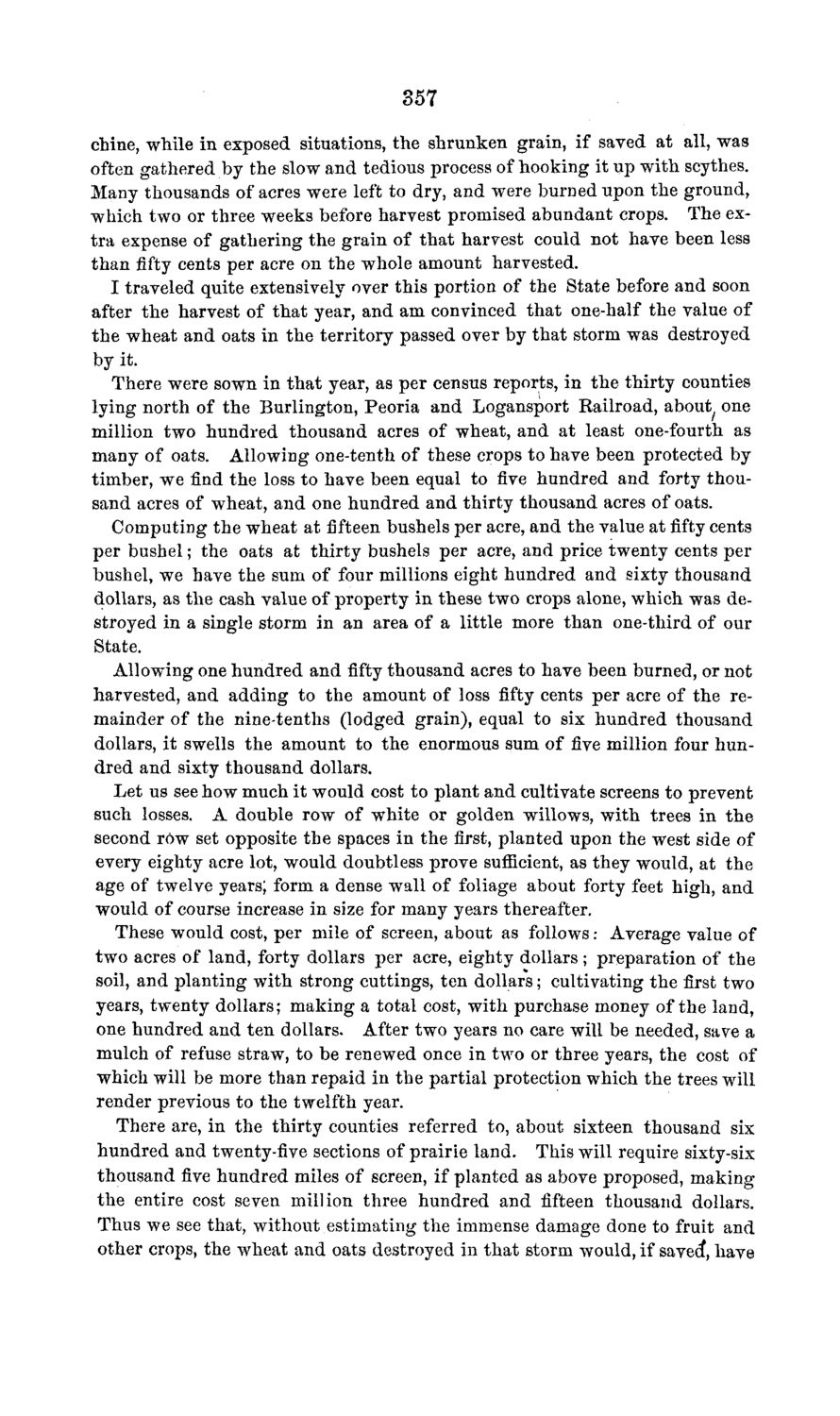| |
| |
Caption: Board of Trustees Minutes - 1869
This is a reduced-resolution page image for fast online browsing.

EXTRACTED TEXT FROM PAGE:
357 chine, while in exposed situations, the shrunken grain, if saved at all, was often gathered by the slow and tedious process of hooking it up with scythes. Many thousands of acres were left to dry, and were burned upon the ground, which two or three weeks before harvest promised abundant crops. The extra expense of gathering the grain of that harvest could not have been less than fifty cents per acre on the whole amount harvested. I traveled quite extensively over this portion of the State before and soon after the harvest of that year, and am convinced that one-half the value of the wheat and oats in the territory passed over by that storm was destroyed by it. There were sown in that year, as per census reports, in the thirty counties lying north of the Burlington, Peoria and Logansport Railroad, about one million two hundred thousand acres of wheat, and at least one-fourth as many of oats. Allowing one-tenth of these crops to have been protected by timber, we find the loss to have been equal to five hundred and forty thousand acres of wheat, and one hundred and thirty thousand acres of oats. Computing the wheat at fifteen bushels per acre, and the value at fifty cents per bushel; the oats at thirty bushels per acre, and price twenty cents per bushel, we have the sum of four millions eight hundred and sixty thousand dollars, as the cash value of property in these two crops alone, which was destroyed in a single storm in an area of a little more than one-third of our State. Allowing one hundred and fifty thousand acres to have been burned, or not harvested, and adding to the amount of loss fifty cents per acre of the remainder of the nine-tenths (lodged grain), equal to six hundred thousand dollars, it swells the amount to the enormous sum of five million four hundred and sixty thousand dollars. Let us see how much it would cost to plant and cultivate screens to prevent such losses. A double row of white or golden willows, with trees in the second row set opposite the spaces in the first, planted upon the west side of every eighty acre lot, would doubtless prove sufficient, as they would, at the age of twelve years; form a dense wall of foliage about forty feet high, and would of course increase in size for many years thereafter. These would cost, per mile of screen, about as follows: Average value of two acres of land, forty dollars per acre, eighty dollars; preparation of the soil, and planting with strong cuttings, ten dollars; cultivating the first two years, twenty dollars; making a total cost, with purchase money of the land, one hundred and ten dollars. After two years no care will be needed, save a mulch of refuse straw, to be renewed once in two or three years, the cost of which will be more than repaid in the partial protection which the trees will render previous to the twelfth year. There are, in the thirty counties referred to, about sixteen thousand six hundred and twenty-five sections of prairie land. This will require sixty-six thousand five hundred miles of screen, if planted as above proposed, making the entire cost seven million three hundred and fifteen thousand dollars. Thus we see that, without estimating the immense damage done to fruit and other crops, the wheat and oats destroyed in that storm would, if savecf, have
| |